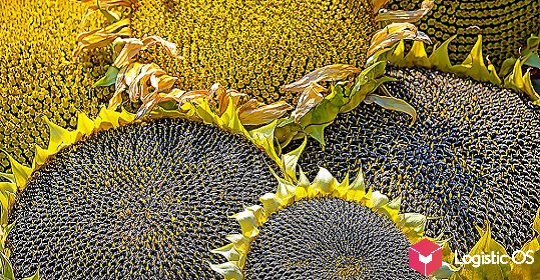The regions of the Volga region and the center are preparing to receive a large harvest, and purchase prices have gone down.
A record grain harvest is expected in the Volga region and the center of Russia.
By all indicators, it is already obvious that it will be higher than the result of 2017.
Penza Region raised the forecast for grain harvest from 2.3 to 3 million tons.
The region shows a very high yield increase: 42 quintals per hectare versus 25 quintals per hectare last year.
The elevators of the region are capable of simultaneously accepting 1.4 million tons of grain for storage, another 1.3 million tons will be received by grain warehouses in agro-industrial enterprises.
But, of course, such a volume of grain is not stably stored: there is a constant rotation.
The Penza region, in particular, needs a large amount of feed grain: this year about 1 million tons.
Additionally, the region supplies wheat to feed mills in Mordovia.
Exports have increased.
In the Nizhny Novgorod region the yield increased by 30% compared to last year: 31 centners per hectare.
And some districts also collected 50-60 centners per hectare.
In general, the Nizhny Novgorod region plans to beat last year’s figures of 1.2 million tons.
The storage capacity is sufficient — the region can store 1.3 million tons at a time.
So far, the only problem is that there is a danger of grain sprouting, so farmers are trying to increase the harvesting speed.
Orenburg Region reports on the readiness to receive an increased harvest: the total storage capacity is 3.3 million tons (including an elevator 1.8 million tons).
In addition, farmers themselves can store more than 3 million tons at their own storage facilities.
As of August 14, the region has threshed 2.36 million tons of grain from 40% of the harvested area.
In the Belgorod region good harvesting rates, which are associated not only with weather conditions, but also with the fact that agricultural producers are provided with the necessary equipment.
Productivity of 56.3 centners per hectare against 51.4 centners per hectare in 2019.
The region also has a developed feed production — 19% of the all-Russian.
Voronezh Region has already harvested 5 million tons of grain and plans to go over the bar of 5.5 million tons.
At the same time, according to representatives of the regional department of agrarian policy, there is enough capacity: 3.2 million tons can be stored by companies, 1.6 million tons — in private farms.
And, if there are no big problems with grain storage, then there is a problem of falling prices.
With such a high yield, the number of offers on the market is growing, and it is often more profitable for producers to sell grain cheaper practically off the wheels than to spend additional funds on transportation and storage.
And then there is an active fight against overloading, which in a period of great demand for transport can become a catalyst for raising tariffs.
Export prices went down sharply: the price of a ton of wheat with 12.5% protein content lost $ 4 ($ 201 per ton) over the past week (FOB Novorossiysk).
In deep-sea ports, the price of wheat (12.5% protein) decreased by 100 rubles over the week. to 13.4 — 14 thousand rubles per ton, and in low water the decrease was 500 rubles. — 12.9 thousand rubles per ton.
Wherever there is cleaning, prices fall on average by 250 — 300 rubles.
But experts do not expect a clear collapse in prices.
Much will depend on the volume of exports.
So far, according to the platform Logistic OS, from July 1 to August 19, 2020, 7,537 have been shipped for export thousand tons of grain, 8.5% less than in the same period last year.


